Now that 2020 is actually coming to an end, Ryan’s reasoning feels like a gift. I am grateful to say now that a decade is passing away, a new one about to begin: may it bring us better days.
On this last day of 2020, then, I’d like to offer you some thoughts looking back on the last decade in Mormon Literature. By necessity, this reflection will be limited by my recollection. Lots of interesting things happen and never make it across my radar or fall between memory’s cracks. I’ll also focus on the kind of literature that interests me the most, which is works that carry forward a conversation about Mormon experience and ideas. I believe in developing our own language.
Part of that belief is religious: I have felt real spiritual power in our words and our way of being in the world and want to tap into that source. Part of that belief is pluralistic: I believe there’s a collective resilience that comes with having a diversity of approaches available. I believe that every human culture has something to contribute to our experience as a species.
National Media
With those interests in mind, the biggest Mormon-related literary events on the national stage over the past ten years do not strike me as terribly inspiring. Having a grandfather who was born under literal colonial rule may have made me extra-bristly about the pressures placed on minority writers, but it seems to me the writers are still expected to exploit, exoticize, or camouflage Mormon content to meet national tastes.
Exhibit A arrived in 2011. Having known a lot of deeply religious Africans from my home ward in Columbus, Ohio, and from my time as a missionary in Germany, I could never bring myself to read more than a summary of The Book of Mormon musical, which struck me as peddling stereotypes about Mormons mixed with even bigger stereotypes about Africans as a way to sneak some audience-drawing sentimentality into a piece otherwise invested in its own knowing sophistication. It’s interesting that the musical was resonant (to the tune of half a billion dollars) with Americans, but I think that tells us a lot more about Americans than about Mormonism. There may be value in the funhouse mirror depictions of Mormons and Africans in a piece like that, but it’s hard when they feel like the only widely told story.
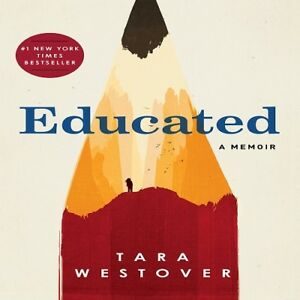 Toward the end of the decade, a text involving Mormonism and produced by an actual Mormon (if not a practicing Latter-day Saint) also made a substantial impression on the larger culture: Tara Westover’s Educated hung out on the New York Times nonfiction bestseller list for 132 weeks after its 2018 debut. I am glad Westover found her own place in the world. I am glad she was able to use her narrative talents to tell her story, and grateful she gave more dimension to her depiction of the Church than she could have by an exclusive focus on her family. At the same time, it’s telling to me that it’s OK to talk about a Mormon upbringing if it’s thrillingly strange and exotic.
Toward the end of the decade, a text involving Mormonism and produced by an actual Mormon (if not a practicing Latter-day Saint) also made a substantial impression on the larger culture: Tara Westover’s Educated hung out on the New York Times nonfiction bestseller list for 132 weeks after its 2018 debut. I am glad Westover found her own place in the world. I am glad she was able to use her narrative talents to tell her story, and grateful she gave more dimension to her depiction of the Church than she could have by an exclusive focus on her family. At the same time, it’s telling to me that it’s OK to talk about a Mormon upbringing if it’s thrillingly strange and exotic.
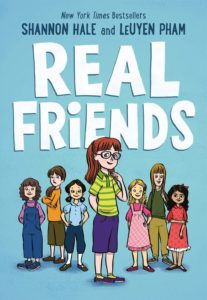 Shannon Hale, who was already a well-established writer, did not get the same support when she decided to talk about her faith. In an interview with the Deseret News, Hale said editors encouraged her to remove all the religious references from her 2017 graphic novel memoir Real Friends, because they worried that depicting faith would cut into sales. Public school librarians are important literary gatekeepers and are understandably wary of even the appearance of proselytizing, but it’s a shame for a pluralist society to create barriers to showing readers what another tradition actually feels like. Hale insisted on keeping Jesus and prayer in order to be true to her experience growing up. “To erase it felt like a lie,” she said. At the same time, a partial erasure seems to have been part of her process: the book never explicitly names her faith.
Shannon Hale, who was already a well-established writer, did not get the same support when she decided to talk about her faith. In an interview with the Deseret News, Hale said editors encouraged her to remove all the religious references from her 2017 graphic novel memoir Real Friends, because they worried that depicting faith would cut into sales. Public school librarians are important literary gatekeepers and are understandably wary of even the appearance of proselytizing, but it’s a shame for a pluralist society to create barriers to showing readers what another tradition actually feels like. Hale insisted on keeping Jesus and prayer in order to be true to her experience growing up. “To erase it felt like a lie,” she said. At the same time, a partial erasure seems to have been part of her process: the book never explicitly names her faith.
It’s tragic to me that she had to fight for permission to give even the camouflaged version of truth where Mormonism is stripped of particularity to be portrayed as generically Christian. For Hale, expressing discipleship in general terms may be enough. In terms of depicting our tradition overall, though, I find it unsatisfying. We didn’t get driven across the plains to pass for Protestant!
I’m more fond of the speculative approaches to camouflage, where writers buy themselves space to play with very Mormon ideas by burying them inside science or magic. Brandon Sanderson’s cross-series Cosmere project is the current flagship of that approach, and it built some major momentum this past decade. While the most Mormon elements I see still come in the previous decade’s Mistborn trilogy (which has answers to present problems coming from a restoration of a lost past, metal plates immune to textual corruption, truths preserved in many faiths being gathered into one to fulfill their purpose), there’s something deeply Mormon about the animating cosmere concept of a splintered God being out of balance. It reminds me of the way we taught about the apostasy on my mission, by saying that ancient truths broke apart, leaving different faiths to emphasize one piece of truth in the absence of others.
Over the past decade, I’ve been glad to see the many worlds of the cosmere, and the shards of Adonalsium, connecting more and more overtly as the Stormlight Archive progresses. It’s been satisfying to watch the way Sanderson develops implicit moral discourses between scenes. This year, reading Rhythm of War, I was also struck by how much Sanderson is willing to act as a ministering brother, almost breaking the fourth wall to acknowledge neurodiverse readers.
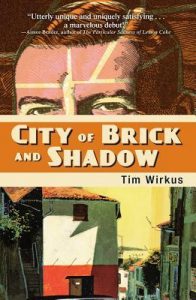
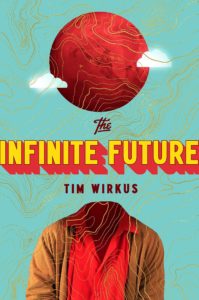 There have been some books over the past ten years from national publishers with more overt Mormon content, though they seem to have played out much more on the margins of literary conversation. Tim Wirkus used Mormon missionaries to great effect in his meditation on storytelling in City of Brick and Shadow. His second novel, The Infinite Future, does more to comment on Mormonism and shed novel light on differences within our community. Dave Butler’s Witchy War series deals with very Mormon questions in a magical alternate early America. The series does really interesting stuff, for example, with temple and initiation rites. The Cunning Man, Butler’s collaboration
There have been some books over the past ten years from national publishers with more overt Mormon content, though they seem to have played out much more on the margins of literary conversation. Tim Wirkus used Mormon missionaries to great effect in his meditation on storytelling in City of Brick and Shadow. His second novel, The Infinite Future, does more to comment on Mormonism and shed novel light on differences within our community. Dave Butler’s Witchy War series deals with very Mormon questions in a magical alternate early America. The series does really interesting stuff, for example, with temple and initiation rites. The Cunning Man, Butler’s collaboration 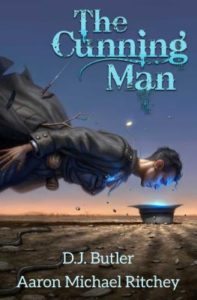 with Aaron Ritchey, is also fantastic. It uses both magic and historical fiction as permission for a Depression-era Mormon setting and brings together our mythos and history in really interesting ways. In the brief period in 2019 when I could write for Dialogue, I wrote a review where I scratched the surface of what’s going on in the book.
with Aaron Ritchey, is also fantastic. It uses both magic and historical fiction as permission for a Depression-era Mormon setting and brings together our mythos and history in really interesting ways. In the brief period in 2019 when I could write for Dialogue, I wrote a review where I scratched the surface of what’s going on in the book.
Novelists like Tim and Dave give me glimmers of hope that we might be building toward a better literary presence in the broader American publishing world. We’ll see what the next decade brings.
Church and the Church-Owned Market
I once wrote a blog post for the Association for Mormon Letters comparing our literary situation to those of other faiths with origins in the 19th century: Baha’is, Seventh-Day Adventists, and Jehovah’s Witnesses. In our positive attitudes about literature, we track closest to Baha’is. In terms of institutional investment in literature, we outstrip all three.
Deseret Book, and the other imprints it gobbled up, frustrate many literary Mormon writers. It’s honestly a marvel, though, that we have our own publishing company, that said company produces stuff that contributes to a culture, and that it has found a way to survive in a hard era for large and mid-size publishers alike. I don’t keep up terribly well with what gets published in the Mormon market, but I do have a few fond memories.
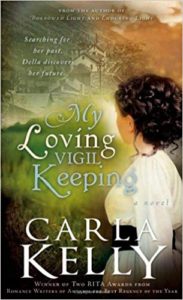 My aunt is friends with Carla Kelly and strongly recommended her 2012 Cedar Fort novel My Loving Vigil Keeping to me. I loved it: Carla does a fantastic job with the details of Mormon life at the beginning of the twentieth century. She also carries on a time-honored tradition of using romance to think about class, which plays out in interesting ways in the novel. And it’s just fun and sweet to read. I can still imagine myself on a train out toward the mines in Scofield, or in the Welsh-dominated ward there, listening to people sing.
My aunt is friends with Carla Kelly and strongly recommended her 2012 Cedar Fort novel My Loving Vigil Keeping to me. I loved it: Carla does a fantastic job with the details of Mormon life at the beginning of the twentieth century. She also carries on a time-honored tradition of using romance to think about class, which plays out in interesting ways in the novel. And it’s just fun and sweet to read. I can still imagine myself on a train out toward the mines in Scofield, or in the Welsh-dominated ward there, listening to people sing.
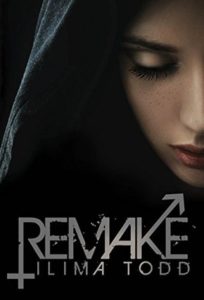 Nicole served on the jury for the 2014 Whitney Awards and read fifty or so books in a few months. One book she recommended to me afterward was Ilima Todd’s Remake, a dystopian romance and coming-of-age story set in Australia and the Pacific. The genre was already well-trod ground by then, but it’s what a writer does with it that counts. Remake is a really gutsy text, exploring our frameworks for gender in a way that critiques both modern secular models and traditionalist modes of gender essentialism. Like My Loving Vigil Keeping, it’s doing interesting work to advance a conversation about our beliefs through story.
Nicole served on the jury for the 2014 Whitney Awards and read fifty or so books in a few months. One book she recommended to me afterward was Ilima Todd’s Remake, a dystopian romance and coming-of-age story set in Australia and the Pacific. The genre was already well-trod ground by then, but it’s what a writer does with it that counts. Remake is a really gutsy text, exploring our frameworks for gender in a way that critiques both modern secular models and traditionalist modes of gender essentialism. Like My Loving Vigil Keeping, it’s doing interesting work to advance a conversation about our beliefs through story.
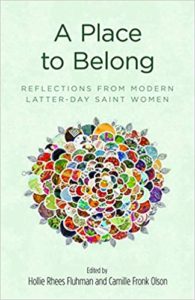 Deseret Book has also done a lot of interesting stuff in life writing, which manages to hide in plain sight from many lovers of literature like me. In 2019, I really enjoyed going to a reading for A Place to Belong, the anthology of women’s essays edited by Hollie Reese Fluhman and Camille Fronk Olson. I like
Deseret Book has also done a lot of interesting stuff in life writing, which manages to hide in plain sight from many lovers of literature like me. In 2019, I really enjoyed going to a reading for A Place to Belong, the anthology of women’s essays edited by Hollie Reese Fluhman and Camille Fronk Olson. I like 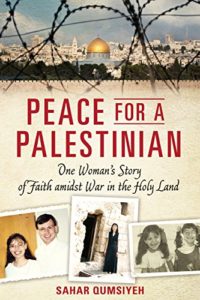 the tonal variety in the collection. I just started Sahar Qumsiyeh’s Peace for a Palestinian: I’m intrigued by books that try to show how Latter-day Saint faith has intersected with different histories and it’s noteworthy that Deseret Book was supportive of a Palestinian telling her own politically-inflected story.
the tonal variety in the collection. I just started Sahar Qumsiyeh’s Peace for a Palestinian: I’m intrigued by books that try to show how Latter-day Saint faith has intersected with different histories and it’s noteworthy that Deseret Book was supportive of a Palestinian telling her own politically-inflected story.
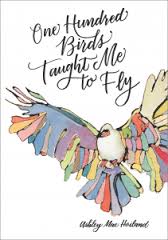 In life writing, the Maxwell Institute has also really stepped up through their Living Faith series. They’ve managed to be a Church-funded channel with an unusually high level of intellectual and literary credibility. A publisher that clearly cares about craft even more than commerce, ideas even more than ideology. I read Ashley Mae Hoiland’s One Hundred Birds Taught Me to Fly during a stretch of
In life writing, the Maxwell Institute has also really stepped up through their Living Faith series. They’ve managed to be a Church-funded channel with an unusually high level of intellectual and literary credibility. A publisher that clearly cares about craft even more than commerce, ideas even more than ideology. I read Ashley Mae Hoiland’s One Hundred Birds Taught Me to Fly during a stretch of 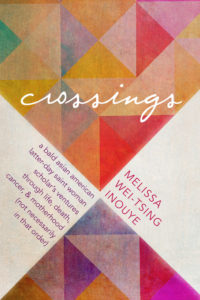 chemotherapy that seems to have gotten in the way of my memory, so I can’t be terribly articulate about it, but it stands out in my memory as doing interesting work. Melissa Inouye’s Crossings is a nice collection of shaped pieces and writing artifacts. It has a sort of literary book of remembrance feel, a collection of powerful metaphors encased in the stuff of life.
chemotherapy that seems to have gotten in the way of my memory, so I can’t be terribly articulate about it, but it stands out in my memory as doing interesting work. Melissa Inouye’s Crossings is a nice collection of shaped pieces and writing artifacts. It has a sort of literary book of remembrance feel, a collection of powerful metaphors encased in the stuff of life.
Deseret Book gets a bad rap in literary circles. It’s earned some of that through choices made over decades. But there’s been good stuff there and we’re lucky to have our own bookstores.
Direct Church channels are another potential source of storytelling. Church periodicals have published quite a bit of fiction and poetry over the years, but had already shifted away from doing so around the beginning of the century. I’m not sure if that’s out of a particularly Latter-day Saint concern for giving a true witness, or also influenced by the ongoing shift toward more nonfiction among American readers. I will confess that I haven’t read a lot in church magazines over the past ten years, so I can’t speak to the quality of the occasional poem that still crops up or whether there are personal voice pieces that do particularly interesting work with the way we talk about our experience.
If you look beyond the magazines, though, to include other Church channels, the last decade has been pretty interesting. During the 20th century, the Church got quite good at communicating on a broadcast media model–crafting idealized, central messages to communicate core ideals out to membership and the broader public alike. By the end of the 20th century, though, audiences were already starting to get cynical about that mode of communication. The advent of the internet rapidly gave people access to multiple, messier stories. Audiences developed a thirst for individuality and authenticity in their stories rather than the more mascot-of-values approach that had prevailed for so long.
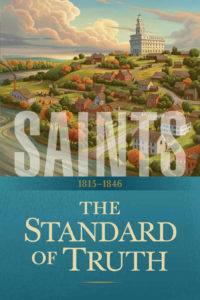 I think a lot of the faith crises of the early 21st century had to do with the Church’s struggle to shift from a mass media mentality to engage with new media sensibilities. I don’t think anybody has entirely figured out how to live in our shifting media culture yet, but over the last decade the Church certainly made substantial narrative changes to feel its way forward. The “I’m a Mormon” campaign struck me as really valuable symbolic storytelling, a way to affirm the gospel as refracted through a diversity of individual voices rather than through a single idealized norm. I also think a lot of the stuff that came out of Church History during my first run there did a good job, with Saints being the highest profile example. I’ll talk about that later, when I get to reflections on my own work. Laura Hurtado’s work as a curator at the Church’s Museum of History and Art also had a strong positive impact on our visual storytelling culture, opening up room for more stylized depictions of sacred events that help communicate the way that they’re right on the end of reality and transcend a more photographic approach.
I think a lot of the faith crises of the early 21st century had to do with the Church’s struggle to shift from a mass media mentality to engage with new media sensibilities. I don’t think anybody has entirely figured out how to live in our shifting media culture yet, but over the last decade the Church certainly made substantial narrative changes to feel its way forward. The “I’m a Mormon” campaign struck me as really valuable symbolic storytelling, a way to affirm the gospel as refracted through a diversity of individual voices rather than through a single idealized norm. I also think a lot of the stuff that came out of Church History during my first run there did a good job, with Saints being the highest profile example. I’ll talk about that later, when I get to reflections on my own work. Laura Hurtado’s work as a curator at the Church’s Museum of History and Art also had a strong positive impact on our visual storytelling culture, opening up room for more stylized depictions of sacred events that help communicate the way that they’re right on the end of reality and transcend a more photographic approach.
For all the advantages of resource and reach, though, I don’t think that Church-owned channels are a fully satisfactory alternative to the pressures that continue to pervade national media. If there’s pressure to exploit or exoticize Mormonism in national media, there’s residual pressure to idealize it in Church channels. I worry that we are too concerned with appearance and form to consistently access the deep power in our stories. And it’s hard for me to imagine any organization, no matter how inspired, being capable of consistently getting out of its own way.
Voices in the Wilderness
When I think back on the last decade, then, my favorite works are the ones that came from voices in the wilderness. Salman Rushdie once noted that, while film and other forms have a broader cultural reach, the most radical potential comes in the forms where the only requirements for creation are a person and a pen.
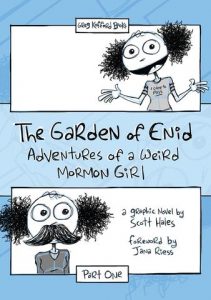 I loved watching The Garden of Enid unfold week to week as the comic went up in 2013 and 2014. It’s often funny, but also moving and lyrical and speculative and spiritual. I think it’s one of the smartest texts we got out of the decade while also being thoroughly enjoyable for a teenage reader. I love Enid as a character. I love the web of relationships (both ambivalent and warm) that surround her. I love the weird Mormon references and commentary on what we face.I love the use of panel shapes and gutters in the more formally ambitious pieces in the series. Scott’s drawing of God staying up at night thinking about us is maybe my favorite figurative representation of the divine.
I loved watching The Garden of Enid unfold week to week as the comic went up in 2013 and 2014. It’s often funny, but also moving and lyrical and speculative and spiritual. I think it’s one of the smartest texts we got out of the decade while also being thoroughly enjoyable for a teenage reader. I love Enid as a character. I love the web of relationships (both ambivalent and warm) that surround her. I love the weird Mormon references and commentary on what we face.I love the use of panel shapes and gutters in the more formally ambitious pieces in the series. Scott’s drawing of God staying up at night thinking about us is maybe my favorite figurative representation of the divine.
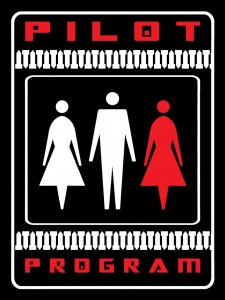 TRANSITION In 2008 or maybe 2009, Mel Larson had bounced an idea off me for a play where modern Latter-day Saints are asked to practice polygamy again. I found that premise totally daunting–and was extremely impressed in 2015 when I went to Pilot Program and saw how she pulled it off. The piece ends up being about the different things we expect from relationships, both romantic and social, about the pull of generations and the rawness of our relationships with a child and all each child represents. It’s intimate and terrifying and compelling, all at the same time.
TRANSITION In 2008 or maybe 2009, Mel Larson had bounced an idea off me for a play where modern Latter-day Saints are asked to practice polygamy again. I found that premise totally daunting–and was extremely impressed in 2015 when I went to Pilot Program and saw how she pulled it off. The piece ends up being about the different things we expect from relationships, both romantic and social, about the pull of generations and the rawness of our relationships with a child and all each child represents. It’s intimate and terrifying and compelling, all at the same time.
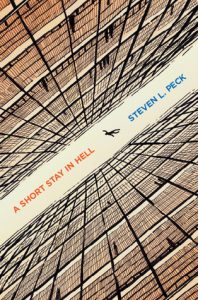 In fiction, Steven Peck felt like the voice of the decade. His use of surreal imagery to get at serious questions is one mark of what my brother Mattathias calls “Peculiar Fiction.” Peck leans in to conflicting voices and evidence, highling the limits and distortions our own reality-processing introduces into any efforts to know what’s going on, and still finds moments of transcendence in the slightest things. A Short Stay in Hell left me intellectually haunted and laid a groundwork for me to
In fiction, Steven Peck felt like the voice of the decade. His use of surreal imagery to get at serious questions is one mark of what my brother Mattathias calls “Peculiar Fiction.” Peck leans in to conflicting voices and evidence, highling the limits and distortions our own reality-processing introduces into any efforts to know what’s going on, and still finds moments of transcendence in the slightest things. A Short Stay in Hell left me intellectually haunted and laid a groundwork for me to 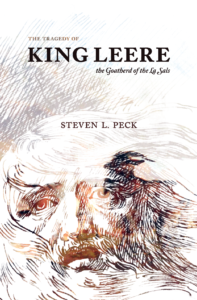 appreciate Peck’s view of evolution. The scenes where we see things stripped down to a single function through a battle robot’s mind in The Tragedy of King Leere will stick with me for a long time, especially paired with the frame questions about what it means to love the land. Steven Peck was prolific this past decade and he gave us new ways of seeing, grounded in the southern Utah landscape he came from and the faith intertwined with his heart and history.
appreciate Peck’s view of evolution. The scenes where we see things stripped down to a single function through a battle robot’s mind in The Tragedy of King Leere will stick with me for a long time, especially paired with the frame questions about what it means to love the land. Steven Peck was prolific this past decade and he gave us new ways of seeing, grounded in the southern Utah landscape he came from and the faith intertwined with his heart and history.
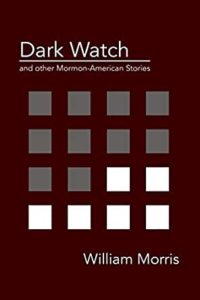 William Morris’s 2015 collection Darkwatch: Mormon-American Stories also made a lasting impression on me. I’ve talked about the pressures I notice on us as a minority culture. Through a mix of contemporary realism and speculative futures focused on various kinds of crypto-Mormons, Morris became the chronicler of pressure. You need to take a deep breath to swim through the strange, submerged landscapes he offers, but it’s well worth the trip.
William Morris’s 2015 collection Darkwatch: Mormon-American Stories also made a lasting impression on me. I’ve talked about the pressures I notice on us as a minority culture. Through a mix of contemporary realism and speculative futures focused on various kinds of crypto-Mormons, Morris became the chronicler of pressure. You need to take a deep breath to swim through the strange, submerged landscapes he offers, but it’s well worth the trip.
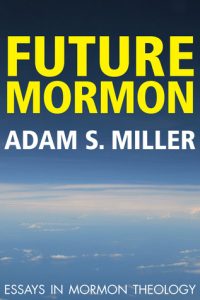 In essay, Adam Miller stands out to me as an important voice from the last decade. As a philosophy professor, he could have opted for a much more utilitarian, idea-dump approach to writing–except that I don’t think his philosophy fits into styleless prose. The lyricism is a big part of what he wants to say. Miller wanders and winds to teach you how to dance. Whether he’s writing essays in the form of letters or loose scriptural translations, the shape of the movement is part of the message. He’s published here and there, through the Maxwell Institute or BCC or just on his own to say what he needs to.
In essay, Adam Miller stands out to me as an important voice from the last decade. As a philosophy professor, he could have opted for a much more utilitarian, idea-dump approach to writing–except that I don’t think his philosophy fits into styleless prose. The lyricism is a big part of what he wants to say. Miller wanders and winds to teach you how to dance. Whether he’s writing essays in the form of letters or loose scriptural translations, the shape of the movement is part of the message. He’s published here and there, through the Maxwell Institute or BCC or just on his own to say what he needs to.
Oases
If writers like these remain voices in the wilderness, there are always at least some organizational oases where we can find some support and encouragement. There always have been: from the beginning, Mormons have felt a sense of peoplehood and a drive to honor and explore that identity in literature and the arts. That impulse gives life to some institutions and slips into the mission of others. Since many of those efforts are more driven by passion than by traditional structures of support, there can be a lot of ebb and flow in what support is there, but you’re never as alone as it sometimes seems.
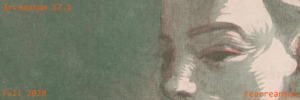 Early in the decade, my sense was that organizational support was ebbing more than flowing. Zarahemla Books, which had published quite a bit in the previous decade, seemed to slow down. Irreantum, the literary journal of the Association for Mormon Letters, went on hiatus in 2013 or so. By the middle of the decade, it looked like AML might fold altogether. In 2015, the conference only ended up happening because I found out they weren’t going to do one and volunteered to pull together something quickly. Andrew Hall has been heroic in keeping the awards going strong through the larger organizational instability. William Morris and Eric Jepson have done great work more recently reviving Irreantum online. The absence of a Mormon literary journal through the middle of the decade, though, felt like a real loss–and a reminder that nothing can grow in gardens we fail to tend.
Early in the decade, my sense was that organizational support was ebbing more than flowing. Zarahemla Books, which had published quite a bit in the previous decade, seemed to slow down. Irreantum, the literary journal of the Association for Mormon Letters, went on hiatus in 2013 or so. By the middle of the decade, it looked like AML might fold altogether. In 2015, the conference only ended up happening because I found out they weren’t going to do one and volunteered to pull together something quickly. Andrew Hall has been heroic in keeping the awards going strong through the larger organizational instability. William Morris and Eric Jepson have done great work more recently reviving Irreantum online. The absence of a Mormon literary journal through the middle of the decade, though, felt like a real loss–and a reminder that nothing can grow in gardens we fail to tend.
The two long-standing independent journals that have made room for literature had uneven decades. At one point, Sunstone considered dropping fiction altogether, but Stephen Carter was able to articulate a case for investing in culture as well as commentary. Dialogue has hit some spells where they felt like they were running a little dry on the literary front, though Andrew Hall’s recent tenure as their book review editor and book club coordinator has helped raise the profile of literary work more broadly. Both have published some fantastic work over the decade and helped preserve the sense that there’s a place to go.
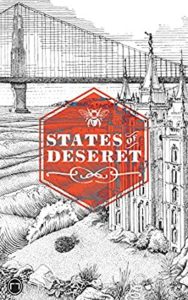
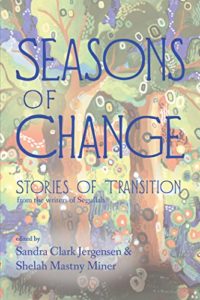 For all the ebb of the first part of the decade, though, other organizations had stepped up or stepped in by the end. Peculiar Pages, which had launched at the end of the previous decade, put out five additional books over the past ten years. I love the framing concept of the Seasons of Change anthology they published in partnership with Segullah. (Segullah deserves its own shout-out for providing a place to discuss Mormon women’s experience in a literary as well as in a less formal, bloggy register.) Another Peculiar pages volume I really enjoyed was their States of Deseret anthology. Lee Allred’s story is an example of the power I see in Mormon Literature. The story is in an alternate timeline and features a zeppelin race, but also deals with J. Reuben
For all the ebb of the first part of the decade, though, other organizations had stepped up or stepped in by the end. Peculiar Pages, which had launched at the end of the previous decade, put out five additional books over the past ten years. I love the framing concept of the Seasons of Change anthology they published in partnership with Segullah. (Segullah deserves its own shout-out for providing a place to discuss Mormon women’s experience in a literary as well as in a less formal, bloggy register.) Another Peculiar pages volume I really enjoyed was their States of Deseret anthology. Lee Allred’s story is an example of the power I see in Mormon Literature. The story is in an alternate timeline and features a zeppelin race, but also deals with J. Reuben 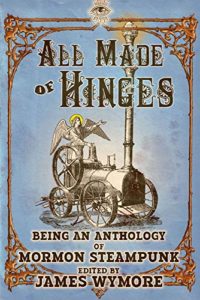 Clark’s anti-Semitism. Fiction feels like a really valuable place to do that sort of work, helping us wrestle with complexity without trying to deny or disown it. It was nice to see Immortal Works, a small Salt Lake Press which launched in 2016, expand the Mormon steampunk subgenre further with a four-volume series, starting with the brilliantly named anthology All Made of Hinges.
Clark’s anti-Semitism. Fiction feels like a really valuable place to do that sort of work, helping us wrestle with complexity without trying to deny or disown it. It was nice to see Immortal Works, a small Salt Lake Press which launched in 2016, expand the Mormon steampunk subgenre further with a four-volume series, starting with the brilliantly named anthology All Made of Hinges.
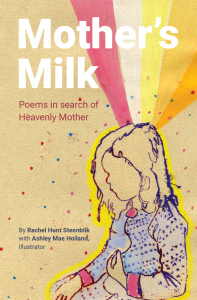 BCC Press launched in 2017: they’ve published at least thirty books since and become a really valuable outlet for the community. They got a pair of Mel’s Mormon plays into print and have been an outlet for Steven Peck. They’ve played an important role in poetry. Rachel Hunt Steenblick’s poem “Motherless Milk” from Mother’s Milk is compact, striking, and probably the Mormon poem of the
BCC Press launched in 2017: they’ve published at least thirty books since and become a really valuable outlet for the community. They got a pair of Mel’s Mormon plays into print and have been an outlet for Steven Peck. They’ve played an important role in poetry. Rachel Hunt Steenblick’s poem “Motherless Milk” from Mother’s Milk is compact, striking, and probably the Mormon poem of the 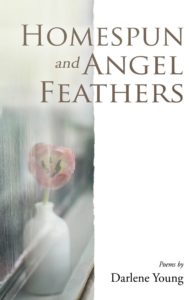 decade. I’m a huge Darlene Young fan and was thrilled to see Homespun and Angel Feathers debut in 2019. Darlene gives us weight, tension, and contrast. She does things with time in her work that help
decade. I’m a huge Darlene Young fan and was thrilled to see Homespun and Angel Feathers debut in 2019. Darlene gives us weight, tension, and contrast. She does things with time in her work that help 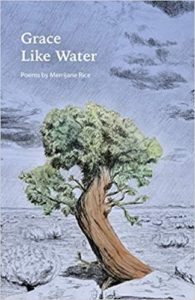 unlock the sacred for me. (While I’m on poetry, I should also mention Merrijane Rice, even though she hasn’t published with BCC. Her poems are deceptively quiet, neatly crafted, and knife you more often than not as they close.)
unlock the sacred for me. (While I’m on poetry, I should also mention Merrijane Rice, even though she hasn’t published with BCC. Her poems are deceptively quiet, neatly crafted, and knife you more often than not as they close.)
The Mormon Arts Center, later renamed the Center for Latter-day Saint Arts, held their first festival in 2017. They’ve 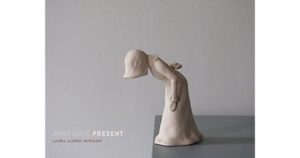 done a lot to bring together artists from different disciplines into a shared conversation. I’m biased since I’m in it (both as a model and a writer), but their Immediate Present volume, which paired recent visual artworks with new writing, felt like an important way to set the tone for opening a broader Mormon creative
done a lot to bring together artists from different disciplines into a shared conversation. I’m biased since I’m in it (both as a model and a writer), but their Immediate Present volume, which paired recent visual artworks with new writing, felt like an important way to set the tone for opening a broader Mormon creative 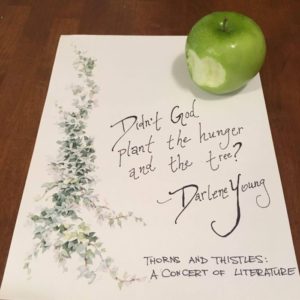 conversation. Working with my wife, Nicole, and Nicole Pinnell, I created a “concert of literature” for their 2019 festival to give people exposure to passages of great Mormon literature scored with Nicole Pinnell’s sounds. I’ve loved their weekly Come Follow Me art posts, their Art in Troubled Times micro-grant initiative, and the things I’ve learned and relationships I’ve built by gathering with them.
conversation. Working with my wife, Nicole, and Nicole Pinnell, I created a “concert of literature” for their 2019 festival to give people exposure to passages of great Mormon literature scored with Nicole Pinnell’s sounds. I’ve loved their weekly Come Follow Me art posts, their Art in Troubled Times micro-grant initiative, and the things I’ve learned and relationships I’ve built by gathering with them.
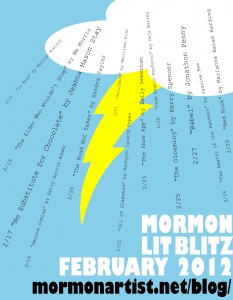 In 2013, Nicole, Scott Hales, and I held the first Mormon Lit Blitz. More recently, we incorporated as the Mormon Lit Lab to help cover the cost of the contests and publication efforts we originally managed ourselves. Somehow (which is my
In 2013, Nicole, Scott Hales, and I held the first Mormon Lit Blitz. More recently, we incorporated as the Mormon Lit Lab to help cover the cost of the contests and publication efforts we originally managed ourselves. Somehow (which is my 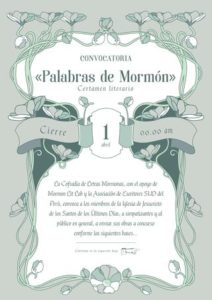 new nickname for Kathy Cowley), we’ve kept contests running through some rough years in our family’s medical lives. I’m proud, looking back, of the opportunities we’ve given writers to connect with an audience and the sense of community that’s built around Mormon literary work. I’m especially proud that we took writers’ challenge to reach through language barriers for the Around the World in Mormon Lit
new nickname for Kathy Cowley), we’ve kept contests running through some rough years in our family’s medical lives. I’m proud, looking back, of the opportunities we’ve given writers to connect with an audience and the sense of community that’s built around Mormon literary work. I’m especially proud that we took writers’ challenge to reach through language barriers for the Around the World in Mormon Lit 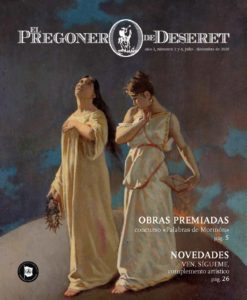 contest, and the Palabras de Mormon contest we co-hosted with the Cofradía de Letras Mormonas, an important new group in the larger Mormon literary ecosystem.
contest, and the Palabras de Mormon contest we co-hosted with the Cofradía de Letras Mormonas, an important new group in the larger Mormon literary ecosystem.
I want to mention one more organization before I move on. The Arch-Hive leans a little more heavily into visual art, but they also publish their own zines, keep up a blog and podcast, and foster a sense of community among 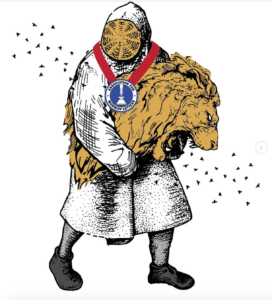 artists interested in the possibilities of our language and culture. The group reminds me of the time I spent (2006-2010) with the New Play Project, where we fostered a similar crazy-young-people arts collective feel. That group gives me hope that the wild generative energy you feel in a Steven Peck book is still alive and well. Mormon arts is like the waves, drawn by some unseen force, advancing ceaselessly toward the shore.
artists interested in the possibilities of our language and culture. The group reminds me of the time I spent (2006-2010) with the New Play Project, where we fostered a similar crazy-young-people arts collective feel. That group gives me hope that the wild generative energy you feel in a Steven Peck book is still alive and well. Mormon arts is like the waves, drawn by some unseen force, advancing ceaselessly toward the shore.
We’ll see what the future holds. As the decade ends–and despite some efforts to focus on my own work–I find myself as president of the Mormon Lit Lab and the Association for Mormon Letters, having recently finished a short stint on the editorial staff of Dialogue and still serving on the advisory board for the Center for Latter-day Saint Arts, so I suppose I am somewhat to blame (or maybe even credit) for how things unfold.
My Story
As I look back on the last decade in Mormon literature, of course, my strongest memories have to do with my own books and projects. I’ll close with some reflection on them. I will dispense with even a reasonable amount of modesty and throw myself on your indulgence now, before either of us gets a chance to see how much I’ll test its limits!
In 2011, I was fresh off a decade in theater and a few years studying creative nonfiction in grad school, still trying to find my place as a writer. I did a lot of interesting experiments with different forms and styles around then. Some of those experiments show up in Remember the Revolution, which I collected and published in 2019. At the time, the most obvious reason I’d shifted away from theater was that I got married and had kids and wanted to spend evenings with them. Looking back, I think my desire to express my multicultural roots was also really important. I didn’t know how to do that adequately on the stage. Creative nonfiction had felt like the right field to follow up on telling the true stories I cared about: it should not have surprised me that BYU’s somewhat less multicultural creative writing faculty were not terribly helpful at solving those technical problems. In any case, I opened the decade teaching part-time at BYU, while devoting a lot of energy to parenting (and the unreasonable quantities of laundry one baby’s projectile spit-up can produce) and whatever was left over to figuring out how to tell the stories I wanted to.
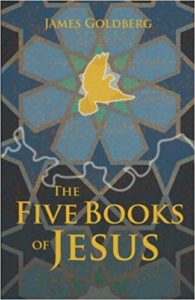 From a career perspective, The Five Books of Jesus was not the smartest full-length project to take on first. I was trained in theater and essay, not lyrical historical fiction. My suspicion that literary and Jesus is not a career-launching selling point would be confirmed when I got zero expressions of interest from the dozens of agents I queried. And who knew who actually wanted a Sikh-Mormon-Jewish love letter to the gospels, where Galilee borrows some DNA, Jurassic Park style, from rural Punjab and parables are mixed with phrases from Urdu poetry, where scholarship and the gospels gets supplemented with insights on a faith’s emergence from the Joseph Smith Papers project?
From a career perspective, The Five Books of Jesus was not the smartest full-length project to take on first. I was trained in theater and essay, not lyrical historical fiction. My suspicion that literary and Jesus is not a career-launching selling point would be confirmed when I got zero expressions of interest from the dozens of agents I queried. And who knew who actually wanted a Sikh-Mormon-Jewish love letter to the gospels, where Galilee borrows some DNA, Jurassic Park style, from rural Punjab and parables are mixed with phrases from Urdu poetry, where scholarship and the gospels gets supplemented with insights on a faith’s emergence from the Joseph Smith Papers project?
I wanted it. And I’m proud of it. I don’t know if anyone will still be reading that book years from now, but it holds up internally as a work. When someone does offer it their attention, when they add the power of their own imagination, it is able to return richness in kind. That’s all an author can ever brag about. If that book were all I ever wrote, I would feel blessed in my work. Dayenu: it would have been enough.
It wasn’t all I got to do, though. The Five Books of Jesus came out in 2012. The next year, Kay Darowski reached out to me to say the Church History Department was hiring for their web team and I should apply. Mormon history has found a foothold in both academia and the Church’s payroll that Mormon literature has not, so there was no shortage of trained historians as candidates, but Matt McBride decided to take a chance on me anyway.
My creative nonfiction training helped with projects like Revelations in Context. My years in theater and dabbling in film prepared me to be the main writer on the department’s video production. My interest in comics helped me think about online exhibits, like the one we did on the Latter-day Saint Armenian exodus. And the work I’d done in The Five Books of Jesus, sorting out how to tell an iconic historical and religious story through multiple points of view, gave me the tools to intervene when they realized they needed to start over late on Saints. My contacts also helped: they brought in Scott Hales and Melissa Larson within a few months of when I started consulting on the project. Angela Hallstrom wasn’t available at the time, but I got her in to meet with Matt McBride anyway about maybe contracting an article, and they were able to bring her in full-time later.
To me, that little cell of literature people who wound up, for at least a while, in the History Department is a testament to how we as a community sometimes end up needing skills we didn’t initially value. I’m glad I took an ill-advised path so that someone could be in the right place when others recognized (however reluctantly) that skills like mine were needed.
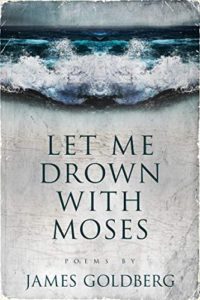 I would take the train up to work each day and that’s how I learned to be a poet. Some of the pieces in Let Me Drown with Moses date back earlier, to my studies with Abhijat Joshi at Otterbein College or to 2011 as I read about Howard Christy’s “Open Hand and Mailed Fist.” Most of them, though, came from the train. Poetry was like coming up for air.
I would take the train up to work each day and that’s how I learned to be a poet. Some of the pieces in Let Me Drown with Moses date back earlier, to my studies with Abhijat Joshi at Otterbein College or to 2011 as I read about Howard Christy’s “Open Hand and Mailed Fist.” Most of them, though, came from the train. Poetry was like coming up for air.
I know some really great poets, so I’m a little self-conscious about my poetic technique. I’m not formally trained. I worry that there are weaknesses I’m just blind to. At the same time, I think Let Me Drown with Moses shows a real emotional command. There’s a lot of raw feeling there but there’s a level of control in the delivery. There’s a midrash that the hail that fell on Egypt when the children of Israel were in bondage contained fire. I may not be a perfect poet, but why should I ask for more than that?
I worked too hard and worried too much in 2015. Nicole blames the cancer recurrence on Saints. I wanted to be able to say it’s just random and would have happened anyway, but there’s some evidence and a lot of medical speculation on stress, the immune system, and cancer rates, so maybe she’s right. I didn’t know at the time how not to throw my whole heart into things. I’m better now, though still trying to work out how to manage all the angles of stress that come with being who I am and doing the kind of work I’ve done.
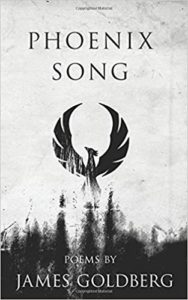 Phoenix Song came mostly out of the cancer. In a lot of ways, it’s building on the groundwork I laid in Let Me Drown with Moses. A Mormon mysticism, grounded in an intuitive, experiential belief in God and a notion that discipleship means wrestling. I also feel like it goes beyond Let Me Drown with Moses, though, in depicting Mormon life. The sketches from my ward nonfiction pieces in the collection feel important to me. I remember my friend David Golding reading “Incident at Greenest,” the piece about Kira at the ward Dungeons & Dragons group, and feeling like it captured something living and potent about the rising generation and what they might do with all the stuff we’ll give them. The poems that rose out of my early reactions to immigration policy under Trumpism also feel important as a chronicle of how it felt as a person of faith from a racialized background to make it through those years.
Phoenix Song came mostly out of the cancer. In a lot of ways, it’s building on the groundwork I laid in Let Me Drown with Moses. A Mormon mysticism, grounded in an intuitive, experiential belief in God and a notion that discipleship means wrestling. I also feel like it goes beyond Let Me Drown with Moses, though, in depicting Mormon life. The sketches from my ward nonfiction pieces in the collection feel important to me. I remember my friend David Golding reading “Incident at Greenest,” the piece about Kira at the ward Dungeons & Dragons group, and feeling like it captured something living and potent about the rising generation and what they might do with all the stuff we’ll give them. The poems that rose out of my early reactions to immigration policy under Trumpism also feel important as a chronicle of how it felt as a person of faith from a racialized background to make it through those years.
I already talked a little bit about Remember the Revolution, a collection of essays and short stories that came out in 2019. It’s a kaleidoscope of the approaches I took to Mormon Literature in the early part of the decade. Certainly not as neat and ordered as, say, The Five Books of Jesus, but ambitious in its own way. If someone wants to write Mormon Lit, I’d probably have them dive into Remember the Revolution before any of my other work to get a sense for the range of what you can try. That book is about possibility.
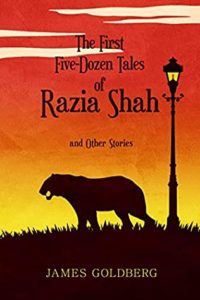 I released my short story collection Razia Shah at the same time. Ideas from the Dharmic faiths play every bit as prominent a role in it as ideas from the Abrahamic ones: that makes it less obviously Mormon literature. At the same time, the book is a valuable reference point for how Mormon sensibilities play out in a summoning of many faiths against the forces of despair. It’s a book there would be a lot to say about if we had the critical infrastructure to say much about our literature at all.
I released my short story collection Razia Shah at the same time. Ideas from the Dharmic faiths play every bit as prominent a role in it as ideas from the Abrahamic ones: that makes it less obviously Mormon literature. At the same time, the book is a valuable reference point for how Mormon sensibilities play out in a summoning of many faiths against the forces of despair. It’s a book there would be a lot to say about if we had the critical infrastructure to say much about our literature at all.
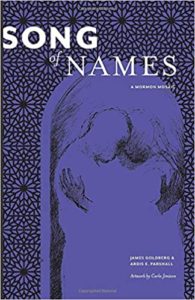 Thanks to help from Patreon, and a few months between jobs, 2020 also turned into a double-book year. Song of Names is the result of years of collaborative work with Ardis Parshall. From a history perspective, I think it does better than any single volume at giving access to a variety of Mormon experiences. The form of context essay/poem/reflective essay–sometimes also with art prints by Carla Jimison–sets it apart within Mormon literature. For me as a poet, Song of Names felt like an important step forward. It retains a lot of the emotional intensity of my earlier work, while taking me into different forms, with their own internal logics. The book’s match between a diversity of forms and its diversity of subjects feels like its greatest contribution.
Thanks to help from Patreon, and a few months between jobs, 2020 also turned into a double-book year. Song of Names is the result of years of collaborative work with Ardis Parshall. From a history perspective, I think it does better than any single volume at giving access to a variety of Mormon experiences. The form of context essay/poem/reflective essay–sometimes also with art prints by Carla Jimison–sets it apart within Mormon literature. For me as a poet, Song of Names felt like an important step forward. It retains a lot of the emotional intensity of my earlier work, while taking me into different forms, with their own internal logics. The book’s match between a diversity of forms and its diversity of subjects feels like its greatest contribution.
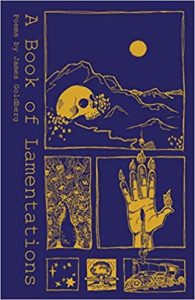 A Book of Lamentations is a cry out through the smoke. If there’s a value to having some books that feel timeless, there’s also something to be said for books that sink their teeth into their moment, books that ask us where we stand right now. Tod Robbins reached out to me when started the book to say the opening poem left him speechless. Once in a while, literature should push us straight into silence.
A Book of Lamentations is a cry out through the smoke. If there’s a value to having some books that feel timeless, there’s also something to be said for books that sink their teeth into their moment, books that ask us where we stand right now. Tod Robbins reached out to me when started the book to say the opening poem left him speechless. Once in a while, literature should push us straight into silence.
What Comes Next?
The time of this writing has now reached 5 pm Mountain time on New Year’s Eve. Odds are that you are reading this after the decade has come to an end and it’s a look back at history.
What will the next ten years bring for Mormon literature? I can’t even pretend to predict it. My own personal goal is just to hang for the adventure and be a part of how the conversation unfolds. I want to keep writing, keep reading, keep discussing, keep figuring out how to create opportunities for other people to create. I hope you’ll play some part in one of more of those areas, dear reader, too.
At the same time, I recognize that culture is a relay race. You or I might run out of steam, or move on to other things, and there’s no shame in that. Other people will step in or step up. We’ll take turns. Our religion is a mine that can never be exhausted. One way or another, the conversation will keep going for as long as anyone is ready to put their shoulder to the wheel.

.
. . . push along, push along.